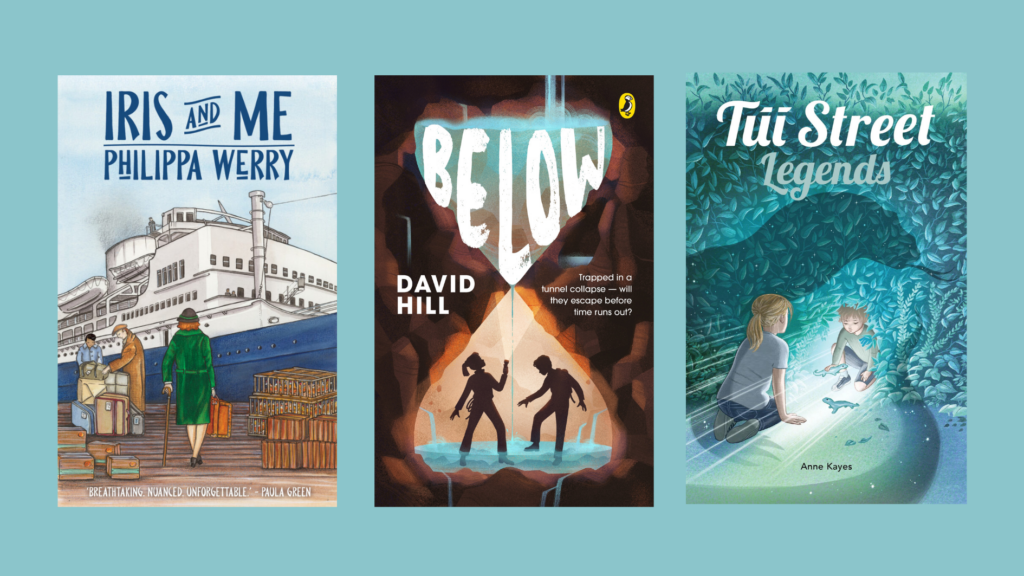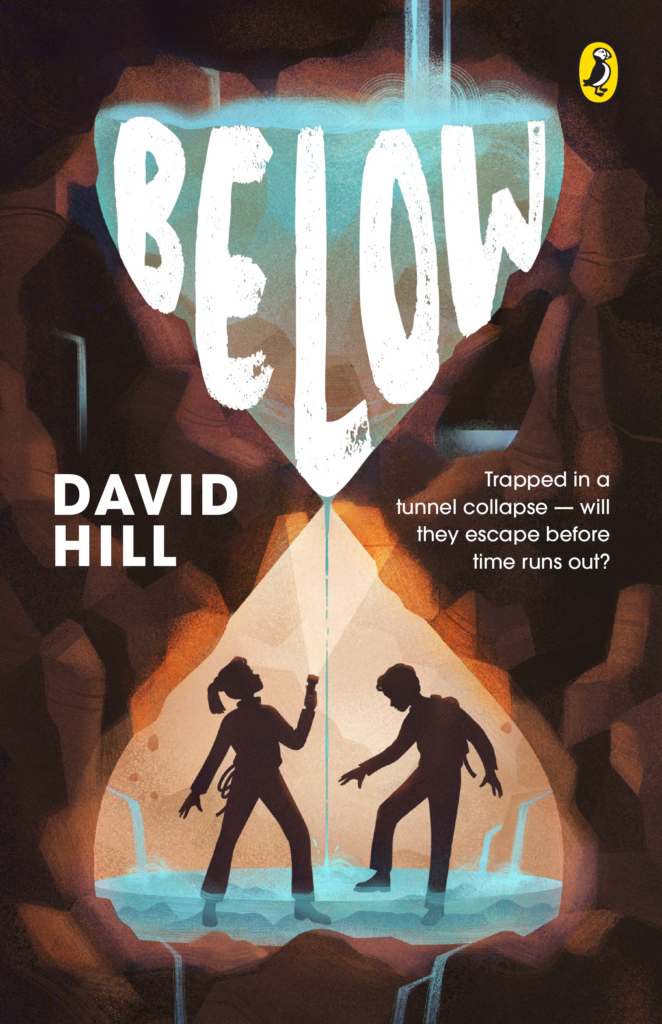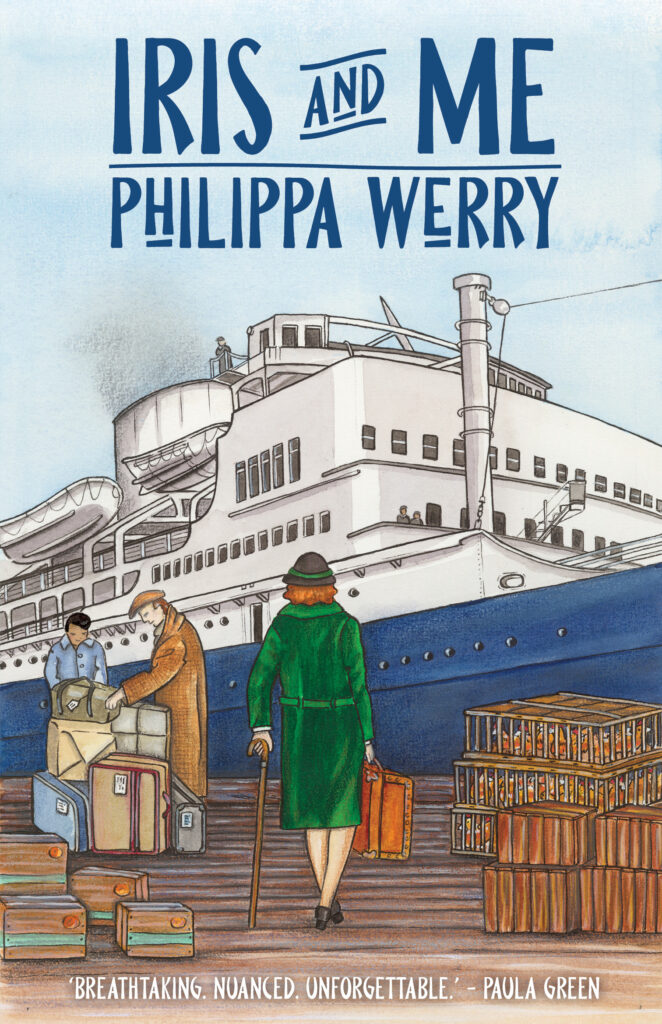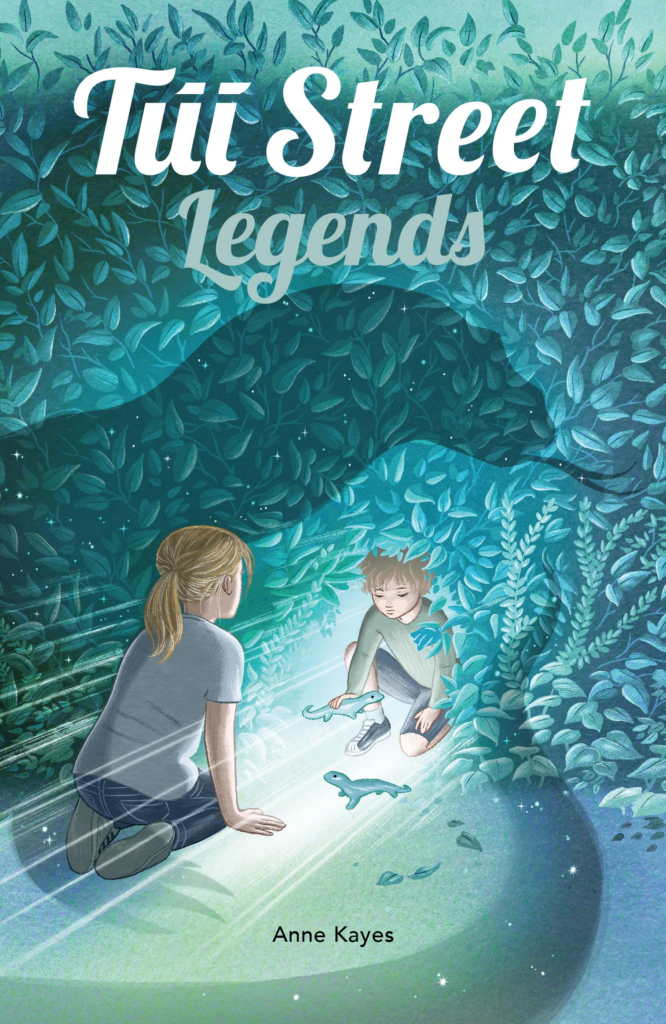Sarah Forster reviews three recent junior fiction reads from some of Aotearoa’s most accomplished writers.

Below, by David Hill
This book takes you underground and leaves you there, gasping for breath until the very end. It is pure David Hill, warts and all, with a pacy plot that will satisfy young readers.
Below is, as the title and the cover both suggest, set underground, in a tunnel where our erstwhile hero Liam’s father is an engineer on the drilling project. The tunnel is destined to take trains through the hill, which Liam argues means that it isn’t as bad for the environment as his classmate Imogen thinks. Her parents are the rural typicality of ‘greenies,’ and protest the project.
As the daughter of an underground miner who, at age 8, joined Greenpeace, you could say I understood the battle lines being drawn. In my case, it was coal being mined, there was no key transport role for those tunnels to play, and the carbon being extracted was destined to be burned. Ah, Australia in the 80s.
This book takes you underground and leaves you there, gasping for breath until the very end
After an argument in class, Liam dares Imogen to join him in the tunnel, to show her the machines and the ways in which the rock removed was being recycled and placed outside to rehabilitate the mountain. She comes, and they break into the tunnel using Liam’s dad’s key, before walking about 1km into the TBM—the Tunnel Boring Machine, whose name is Lucia. Then they hear a rumble.
After surviving the initial rock fall by sheltering in Lucia, it is over to the two kids to work out how to survive for as long as it takes to be rescued. They have phones on them—but of course, they won’t work underground, and they both lied about where they were going. So Liam is just hoping they’ll spot his bike at the opening of the tunnel, and know they are trapped.
As much as Liam knows about tunnelling and what Lucia holds and can do, Imogen knows about survival. They know they need water more than they need food—which turns out to be lucky as they discover water tanks—they need to arrange a toilet space for them both to use, and they need to be rescued.
After surviving the initial rock fall by sheltering in Lucia, it is over to the two kids to work out how to survive for as long as it takes to be rescued
The interactions between the two characters are very gender-stereotyped, with Liam considering Imogen a bit of a know-it-all without being terribly conscious of his own shortfalls in this area. And while I know the male perspective is Hill’s specialty, I thought that the narrative of the book would have really benefitted from switching between the two main characters. We don’t know what Imogen thinks of Liam beyond her dialogue, which is a shame since I’d love to have seen her perspective of his character. But regardless, they are able to put their differences aside and work together when it’s life or death.
Knowing Hill isn’t a fan of setting books in current periods due to the changes in technology, I was curious to see how he dealt with his protagonists having phones. The only thing I thought was unrealistic—given they couldn’t use their usual service underground—was that at no stage did either of them 1) panic they didn’t have a charger or 2) play a game idly while sitting around in Lucia.
The plot twists keep you on your toes, and I found myself fearing for their lives to the very end
For those who can’t guess, our lucky pair do survive their ordeal—but the plot twists keep you on your toes, and I found myself fearing for their lives to the very end. And our protagonists promise to keep talking about how to use technological advances to improve environmental outcomes—very Gen Z!
I highly recommend it, particularly for readers that need a bit of impetus in their books, and who are interested in tunnel engineering and environmentalism.

Iris and me, by Philippa Werry
What an astonishing achievement by Philippa Werry, one of our best authors of history for children. And what a way to tell a story! It’s extremely unusual to see a verse novel published in Aotearoa, but Werry has done it and shown some serious poetic chops in the process.
I approached this tale with trepidation—I wasn’t sure what to expect from a novel in verse about a historical figure who I knew little about. As it turns out, it was a soothing way of learning a lot more about Iris Wilkinson, known as Robin Hyde (we learn why), and her short, adventurous, and ultimately tragic life.
It’s extremely unusual to see a verse novel published in Aotearoa, but Werry has done it and shown some serious poetic chops in the process
An unnamed narrator tells the story of the novel. Throughout the novel, Iris, her typewriter, and the narrator are together, and the latter becomes a powerful voice for those who support others in the world.
“Wisteria, jasmine and honeysuckle twined
among the banyan trees. I always like to look
at things that support other things.”
Robin and the narrator climbed mountains, despite her damaged ankle. The narrator was with her as she had two children, out of wedlock, and when she travelled to Hong Kong with the intent of getting to London via the Trans-Siberian Railway. Robin instead ended up wheedling her way by hook or by crook to the front lines of the Sino-Chinese War, as Japanese soldiers overran Chinese cities.
[Werry] has crafted the tale to ebb and flow, moving between events in Robin’s later history and those in her early history without the reader losing track
Werry carefully hides her own voice in the background, as our narrator tells the tale. She has crafted the tale to ebb and flow, moving between events in Robin’s later history and those in her early history without the reader losing track.
There is some beautiful language, and simple descriptive stanzas that make you want to weep as the book describes the front lines:
“Guns boomed. Puffs of smoke
rose from the villages below us,
where figures dressed in white,
Japanese soldiers, looked small
and strangely ordinary.”
This is a powerful story thanks in large part to the way Werry chose to tell it. The novel gives incredible context—the historical point at which Iris was born and the social circumstances for a woman of her class in that era. Specifically, how women had to hide being pregnant and how single women weren’t considered worthy of government support during the Great Depression! And despite that—despite all of that, she was determined to tell the stories that mattered.
“Birds screeched like witches
and bats flapped through the dark
The moon overhead was cloaked
in white clouds, mourning…”
There is some beautiful language, and simple descriptive stanzas that make you want to weep as the book describes the front lines
I had read this as a book for intermediate-age children—mainly due to the choice of narrator, which at times comes close to hand-holding—but certainly due to the content of Robin’s life, it may be better read by teens, who will get the nuances, as well as enjoy the poetic wordplay. I hope it is studied in schools.

Tūī Street Legends, by Anne Kayes
The Tūī Street gang are back, and again living through legends of the past, cleverly integrated with their modern lives. In this book, we carry on following our friends’ lives as they struggle with their demons (sometimes quite literally). This sits alongside books like The Babysitters Club mainly for their safe setting, but the characters aren’t so stereotypical.
The Tūī street ‘gang’ are a group of kids who live in the same cul-de-sac, and have each other’s backs. The stories in the Tūī Street series roam across their lives, and in this case our main characters are Ella, who is still adjusting to life with her step mum Serena and her stepsisters, Tim, who has a strong drive for social justice, and twins Gemma and Harry, whose Dad’s girlfriend doesn’t treat them well.
The first story of three in the book is about creatures of mythology, centred on two ‘maybe real’ creatures: the Loch Ness Monster and a giant lizard called a Kumi. Ella is the key member of the ‘gang’ in this one, and it centres her friendship with her foster-children neighbours, Sal, and her brother Archie, who we assume to be on the autism spectrum. The story frames a realisation by Ella about how to cope with the new shape of her family, and how to live with grief after her mother’s death, as well as touching on the impact that neurodiversity can have on the siblings that care for them.
The Tūī street ‘gang’ are a group of kids who live in the same cul-de-sac, and have each other’s backs
The second story is concerned with the morality of the actions of Robin Hood. While the kids discussed Robin Hood and how his actions improved the lives of others although he was stealing, Tim learns about dumpster-diving from Sangeeta, a girl in his class. He has already been grabbing apples off an over-loaded apple tree on the way to school—this sees the school decide to build a pātaka kai. Tim looks for other ways to add to it and starts dumpster diving where he shouldn’t. We are also introduced to the octogenarian owner of the apple tree, Mary, who turns out to be great with a bow and arrow. The discussions of morality will make for an interesting ‘philosophy for children’ starter!
Finally, we get to the story of the evil stepmother. When a grumpy neighbour is seen with a wetsuit, Gemma and Harry’s dad’s partner Lula becomes obsessed. During the story, we learn of several legends from a variety of cultural backgrounds related to female animals being robbed of their natural forms—including selkies.
Anne is excellent at weaving in diversity in her stories—whether this is having a multicultural group of kids, a huge range of family situations, some neurodiversity, or mobility concerns like those that Mary has. I also loved seeing the legends told from multiple perspectives. Every good story has multiple versions and gets told and remade by the culture it finds itself within—whether this is a Polynesian story, a German fairytale, or a Tongan legend.
Anne is excellent at weaving in diversity in her stories—whether this is having a multicultural group of kids, a huge range of family situations, some neurodiversity, or mobility concerns like those that Mary has
This series also has some seriously amazing teachers—Mr Tipene and Ms Brennan. They make the school a safe space for the kids that attend, so no matter what is going on at home, they have school to look forward to.
While I didn’t need to reread the previous books in the series to follow along with this one, in some cases it may have been useful. I found the stories that centred on all the different kids’ dogs quite confusing, and sometimes we were so busy rushing through the moral tales that the kids, their motives, and what they were feeling were left behind. This was particularly the case in the second story.
With that said—and as some kids of some age say—I stan the Tūī Street Gang. I think Anne has done a stunning job of putting our kids in a thoroughly modern setting, with some neat use of well-known legends, and some connections made to similar legends from other cultures. There are also some interesting insights from the kids’ perspectives about the universal tales that are contained within these legends.
I think Anne has done a stunning job of putting our kids in a thoroughly modern setting, with some neat use of well-known legends, and some connections made to similar legends from other cultures
I would love my kids’ teachers to use this book as a springboard for discussions of legends, like the previous ones could have been for fairy tales.
Highly recommended.


Sarah Forster has worked in the New Zealand book industry for 15 years, in roles promoting Aotearoa’s best authors and books. She has a Diploma in Publishing from Whitireia Polytechnic, and a BA (Hons) in History and Philosophy from the University of Otago. She was born in Winton, grew up in Westport, and lives in Wellington. She was a judge of the New Zealand Book Awards for Children and Young Adults in 2017. Her day job is as a Senior Communications Advisor—Content for Te Herenga Waka—Victoria University of Wellington.



